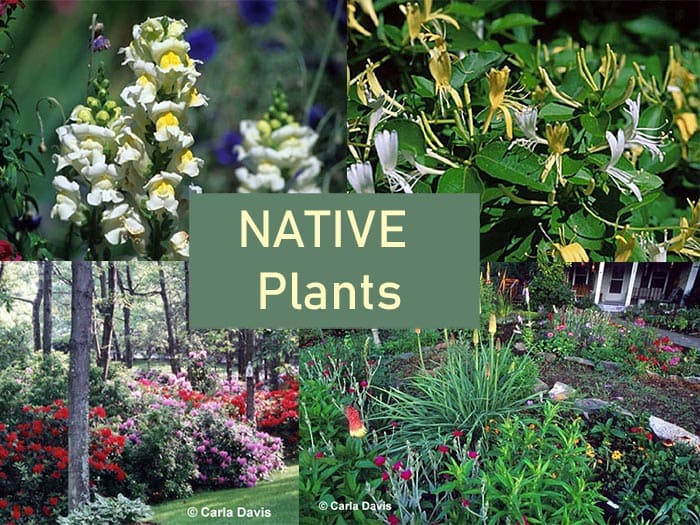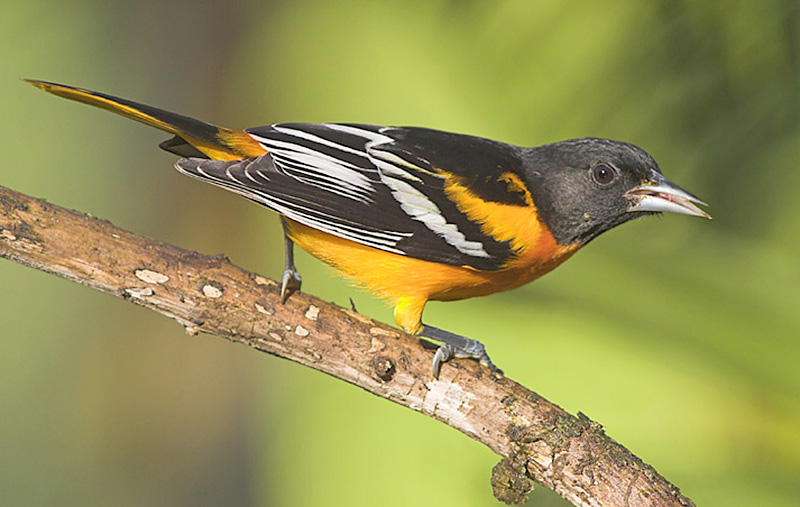
Missouri Plants for Wildlife Habitat & Conservation Landscaping
Do you enjoy observing nature…hearing the song of the chickadee…watching hummingbirds fill up on nectar from trumpet vines…listening to the chattering of squirrels…seeing the beauty and grace of a monarch butterfly perched on a milkweed… experiencing the antics of a Mockingbird…the cooing of the Mourning Doves…the swiftness of the Cottontail…and the brilliance of a Cardinal or Baltimore Oriole?
If the answer is “yes”, you’ll probably want to landscape your property for wildlife so you can experience even more from Mother Nature by attracting more wildlife to your property.
Wildlife doesn’t just randomly appear in a given area. It is there because of favorable habitat. The essential elements that you must provide in your habitat are food, water, cover and a place to raise a family. To attract the most wildlife, you need native trees, shrubs, groundcover, vines and wildflowers, many of which will provide food and shelter.
Native or indigenous plants naturally occur in the region in which they evolved. They are adapted to local soil, rainfall and temperature conditions, and have developed natural defenses to many insects and diseases. Because of these traits, native plants will grow with minimal use of water, fertilizers and pesticides. Wildlife species evolve with plants; therefore, they use native plant communities as their habitat. Using native plants helps preserve the balance and beauty of natural ecosystems.
Remember the function served by plants and structures is more important than their appearance. In other words, don’t base your planting decisions solely on what a plant looks like. Following are WindStar Wildlife Institute’s plant recommendations for wildlife habitats in Missouri:
Trees
Eastern Red Cedar; Eastern White Pine; Silver and Sugar Maple; White, Shingle, Chinkapin, Pin, Red, Post and Black and Bur Oak; Shagbark, Shellbark, Bitternut, and Swamp Hickory; Hackberry; Redbud; Black Walnut, Eastern Cottonwood; Ironwood; Sycamore; Red Mulberry; Basswood; Red and American Elm; Catalpa; White Ash; Kentucky Coffee Tree; Paw Paw; Western Buckeye; Cockspur and Downy Hawthorn; Persimmon; Green Ash; Honey Locust; Osage Orange; Black Cherry; Prairie Crabapple; Black Locust; Peach-leaved, Sandbar and Black Willow

Baltimore Oriole is a very common bird in Missouri.
Woodland Shrubs
Hazelnut; Wahoo; Buckthorn; Wild Gooseberry; Climbing Prairie Rose; Black Raspberry; Highbush Blackberry; Elderberry; Bladdernut; Coralberry; Prickly Ash
Prairie Shrubs
Lead Plant; False Indigo; New Jersey Tea; Buttonbush; Swamp and Rough-leaved Dogwood; Wild Plum, Chokecherry; Aromatic, Winged and Smooth Sumac; Golden Currant
Prairie Wildflowers
New England, Heath, Smooth, Aromatic, Sky Blue, Willowleaf, and Silky Aster: Buttonbush, Sweet Pepperbush, Spicebush, Swamp, Bluntleaf, Mead’s, Narrowleaf, Smooth, Common, Butterfly, Whorled, and Green Milkweed; Prairie, Blacksamson, Topeka, and Pale Coneflower; Grass Leaved, Stiff and Showywand Goldenrod; Wild Strawberry; Longflower and Smallflower Beeblossom; Prairie Fringed Orchid; Sawtooth, Maximilian, Ashy, Stiff, Willow Leaf, and False Sunflower; Spotted and Roundfruit St. John’s-wort; Dotted, Thickspike and Scaly Gayfeather; Cardinal Flower; Great Blue, Pale and Spike Lobelia; Lemon and Mintleaf Beebalm; Common, Missouri and Showy Evening Primrose; Prairie Phlox; Compass Plant
Woodland Vines
American Bittersweet; Virginia Creeper; Riverbank Grape, Raccoon Grape; Trumpet Creeper; Leather Flower; Moonseed; Smooth Carrionflower; Bristly Greenbriar; Grayback Grape; Winter Grape
Prairie Vines
Groundnut; Hedge Bindweed; Knotted Dodder; Climbing Milkweed; Dewberry; Trailing Bean
Grasses and Legumes
Indiangrass; Big and Little Bluestem; Sideouts Grama; Switchgrass; Prairie Cordgrass, Prairie and Rough Dropseed; Western Wheatgrass; Buffalo Grass; Yellowfruit, Bicknells, Straw, Bushes, Franks, Midland and Fox Sedge; Panicgrass; Spikerush; Canada Wild Rye; Purple Lovegrass; Junegrass, Witchgrass; Green, Rusty and Softstem Bulrush; Virginia and Hairy Wild Rye; Indian Woodoats
North of the Missouri River, the state is composed of Dissected Till Plains. This area is covered with rich soil that is particularly good for growing corn. This well-watered prairie is criss-crossed by many slow-moving rivers and streams. The Osage Plains cover western Missouri and is mostly flat but some hills are evident. The largest land area in Missouri, the Ozark Plateau, is a place of beauty covered with forested hills and low mountains. Under foot are many caves. The area is also known for its large springs, lakes, and clear rivers. The St. Francois Mountains are in the southeast which is the highest and most rugged section of the state. The southern part of Missouri is covered by the Mississippi Alluvial Plain. This land, once swampy, has been drained to form a rich farmland suitable for growing cotton, soybeans, and rice. The Missouri Native Plant Society can provide lists of plants for a specific area.
For more information on improving your wildlife habitat, visit the WindStar Wildlife Institute web site. On the web site, you can also apply to certify your property as a wildlife habitat, register for the “Certified Wildlife Habitat Naturalist e-Learning course, become a member and sign up for the FREE WindStar Wildlife Garden Weekly e-mail newsletter.

